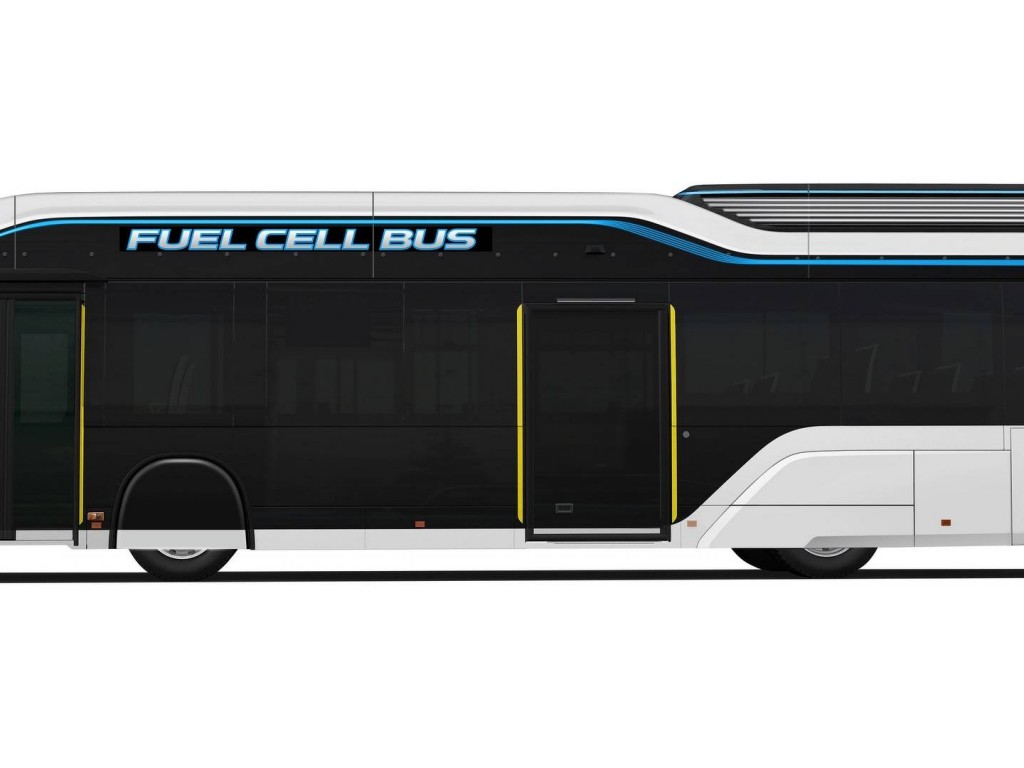Toyota Motor Corporation (Toyota) announces the launch of the “Sora1,” a Toyota fuel cell bus (FC bus) concept. Toyota plans to launch sales of a commercial model based on the concept vehicle in 2018 and expects to introduce over 100 Sora, mainly within the Tokyo metropolitan area, ahead of the Tokyo 2020 Olympic and Paralympic Games.
Toyota developed the Sora (concept model) based on the vision of an “enduring town icon” guided by two ideas: to make best use of the characteristics of the FC unit; and to enhance the comfort of passengers traveling on bus routes.
Service vehicle for the entire community
Toyota aims to create a bus that works for the world and for people, is environmentally friendly, and can contribute to communities beyond its role as a mobility service.
The Toyota Fuel Cell System (TFCS), which was developed for the Mirai fuel cell vehicle (FCV), has been adopted to deliver superior environmental performance with no CO2 emissions or Substances of Concern (SoC) emitted when in operation.
The Sora is equipped with a high-capacity external power supply system, providing high output and a large capacity of electricity supply (9 kW maximum output, and electricity supply of 235 kWh2) and can be used as an emergency power source following disasters.
Universal design and function that is people-centered
Because the bus is envisioned to be used by large and varying numbers of passengers at any given time, Toyota paid close attention to convenience, safety, and peace of mind with the aim to give all passengers a pleasant riding experience, so that they would want to ride the buses regularly.
Horizontal seats with an automatic storage mechanism improves comfort (first in Japan3)
The bus is equipped with horizontal seats with an automatic storage mechanism to provide space for strollers or wheelchairs. This provides extra seating for regular passengers when the space is not needed for strollers or wheelchairs.
Eight high-definition cameras fitted inside and outside the vehicle detect pedestrians and bicycles around the bus, providing a peripheral monitoring function that warns the driver with sound and images to improve safety.
The acceleration control function suppresses sudden acceleration and enables gentle acceleration from stops, in consideration of the safety of standing passengers. Also, there is no lurching due to the lack of a need for gear shifting.
Adoption of automatic arrival control detects the guidance line on the road surface and uses automatic steering and deceleration to stop the bus with approximately 3 to 6 cm of clearance from the bus stop, and within a range of 10 cm ahead of or behind the bus stop position. This improves boarding and exiting for passengers using strollers or wheelchairs.
Bus transportation capability, speed, punctuality, and convenience is boosted by ITS Connect, which utilizes vehicle-to-vehicle and vehicle-to-infrastructure communications to support safe driving, together with systems that support bus convoys and that provide priority at traffic signals (PTPS5).





